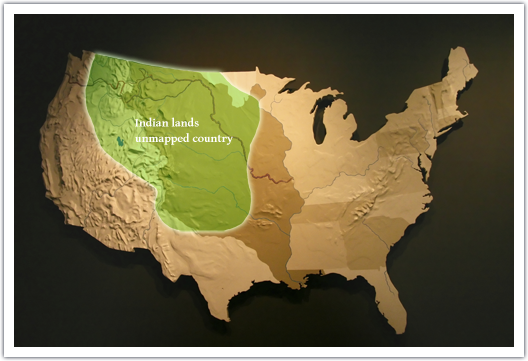Two million square miles of territory between the eastern frontier and outposts on the Pacific Ocean had to be crossed (and acquired) in order to fulfill the vision of a nation determined to prosper under its Manifest Destiny.

Indian Territory now served
as the land bridge that link the East to the Far West. For the
first two generations of the American republic, what the Indians
did in the country beyond the Mississippi was on little concern to
politicians and ordinary citizens. But by 1836, the Indian
land bridge was the largest and most formidable obstacle to
reaching the Pacific Ocean. Indian Country was being criss-crossed
by new emigrant trails every year, but this peaceful impasse
between settlers and Indians was not going to last long. The
status of Indian territory would soon be challenged by the ever
expanding tide of western settlements.
By the end of
the decade, as whites in Texas were clamoring for statehood, and
pioneers began demanding that Congress open up the entire Indian
Territory to settlement, the land bridge was under seige.
Soon, the demands of white citizens took the form of bills
introduced into Congress calling for the extinguishment of tribal
titles. The Indians, who had been promised these lands in
perpetuity, were fast learning that 'perpetuity' in the white man's
world was shorter than a generation.